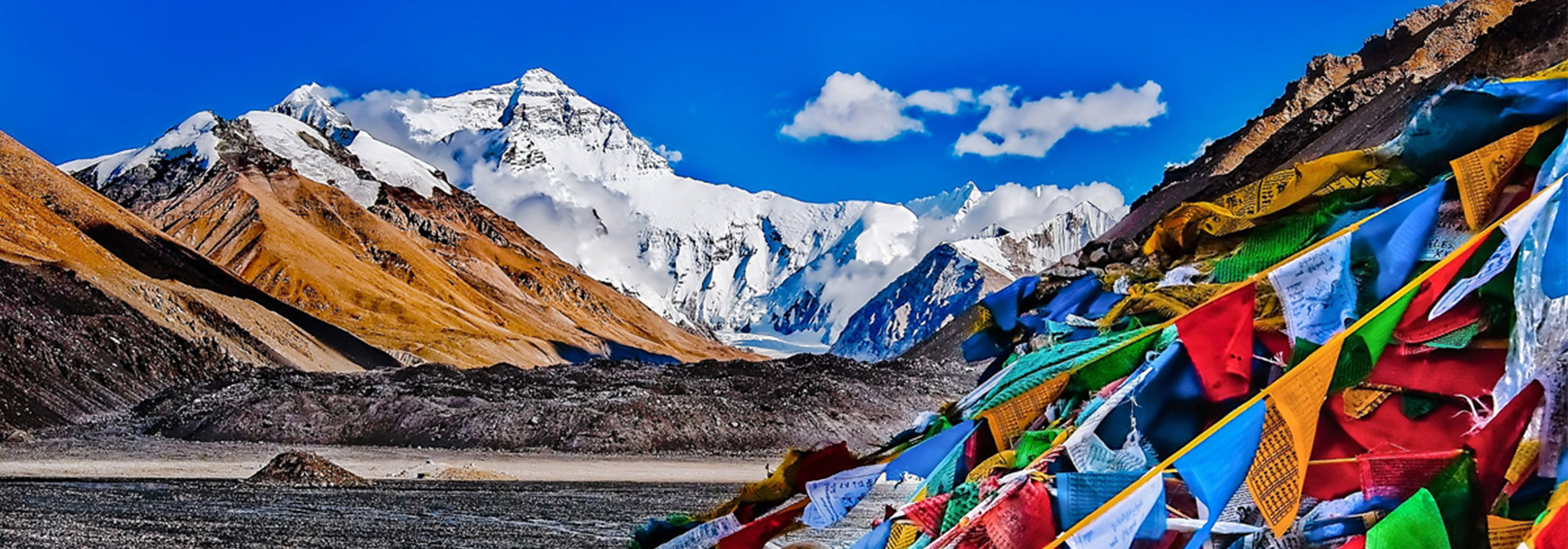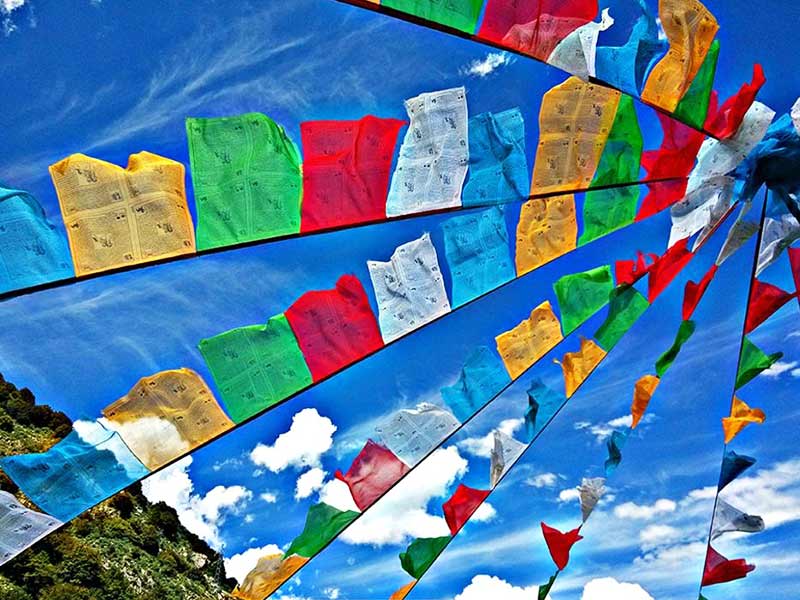
Prayer Flags in Bhutan are made of loosely woven cotten and comes in five colour indicating five elements. The prayer flags are extremely popular in Bhutan tourism as tourists from across the globe specially come to Bhutan to see the beautiful flags and wheels.
Prayer flags are inscribed with auspicious and sacred emblems, symbols, and texts in the forms of invocations, mantras, and sutras. All of which are prayers and blessings. Prayers and blessings for long life, good fortune, health, wealth, peace.
Prayers and blessings for happiness, prosperity, protection from harm, strength. Prayers and blessings for wish-fulfillment, luck, harmony, wisdom, merit, compassion.
It is believed that when the wind moves prayer flags, even with the slightest breeze, these prayers and blessings become activated, and then are carried through the air in a spiritual vibration across the vicinity. Not only does the flag planter, but everything that is touched by the wind, and all sentient beings, benefit from the prayers and blessings that are carried by the wind.
No wonder I just wanted to stand there, surrounded by prayer flags moving in the wind. No wonder it felt so peaceful, centering, and healing to be in the presence of prayer flags.

Prayer flags are everywhere in Bhutan. In front of homes, hotels, shops, temples, monasteries, religious sites, places of spiritual importance. On rooftops and near roads. Down in the valleys, up on the hillsides. On bridges, over rivers, and at mountain passes. Attached to trees, and amongst red rice and other fields. Alongside, surrounding, or attached to chortens and prayer wheels. You see them when walking in the villages, when trekking, and when driving. They are placed where people gather for a special reason. Prayer flags are part of everyday life for the Bhutanese, and part of their Buddhist religion.
Many prayer flags are made out of five colors. Each color represents the five elements on a physical level, the building blocks of both our bodies and the environment. Yellow is earth; green is water; red is fire; white is air/wind/cloud; and blue is sky/space. (Although some sources assign the colors a bit differently.) On a spiritual level the five colors represent the five emotions, the five Wisdoms of Buddha, the five Buddha Families, the five Meditating Buddhas, and the five directions. These five colors also symbolize some of the prayers and blessings above.
There are several types of prayer flags in Bhutan. Lungdhar are square or rectangular in shape, made of the five colors, are connected along their top edges, and hung horizontally or diagonally on a string. In the center of each flag a prevalent symbol is printed, the Wind Horse (Lungta), which is a horse that carries on its back the wish-fulfilling jewel of enlightenment.
Darchor, also made of the five colors, are very tall vertical flags attached to poles planted in the ground. Darchor translates as “to increase life, fortune, health and wealth for all sentient beings.”
Lhadhar, the largest flag, are also very tall vertical flags. They are white in color, usually have no text, and contain ribbons of red, yellow, and blue. Lhadhar are displayed in front of important places, such as monasteries and palaces, and one must be formally dressed to enter these places. Lhadhar represent victory over the forces of evil, and are commonly inscribed with the four powerful animals, the tiger, the snow lion, the dragon, and the Garuda (a celestial royal bird). These animals are also on the four outside corners of a Lungdhar prayer flag, surrounding and guarding the Wind Horse.
Goendhar, the smallest prayer flags, are located in the middle of a rooftop of a home. Rectangular in shape, they are white with ribbons of green, red, yellow, and blue attached to the edges. These flags are blessings for welfare, prosperity, and harmony in the family.
Very tall white prayer flags, Manidhar, are also vertical and attached to poles. They are raised on behalf of a deceased person, as a way of remembering the person who died. It is believed that there are benefits from hoisting batches of 108 (an auspicious number) of Manidhar prayer flags. Although, hoisting one flag is just as beneficial.
Prayer flags are considered holy, and should be treated with respect. When raising or hanging prayer flags, it is important to keep in mind this saying: “May all sentient beings everywhere receive benefit and find happiness.”
While I bought some Lungdhar prayer flags to hang in my back yard at home to remind me of Bhutan, I miss seeing the colorfulness of the prayer flags everywhere. I miss hearing their flapping sound in the wind. And I miss being in their peaceful, centering, and healing presence.